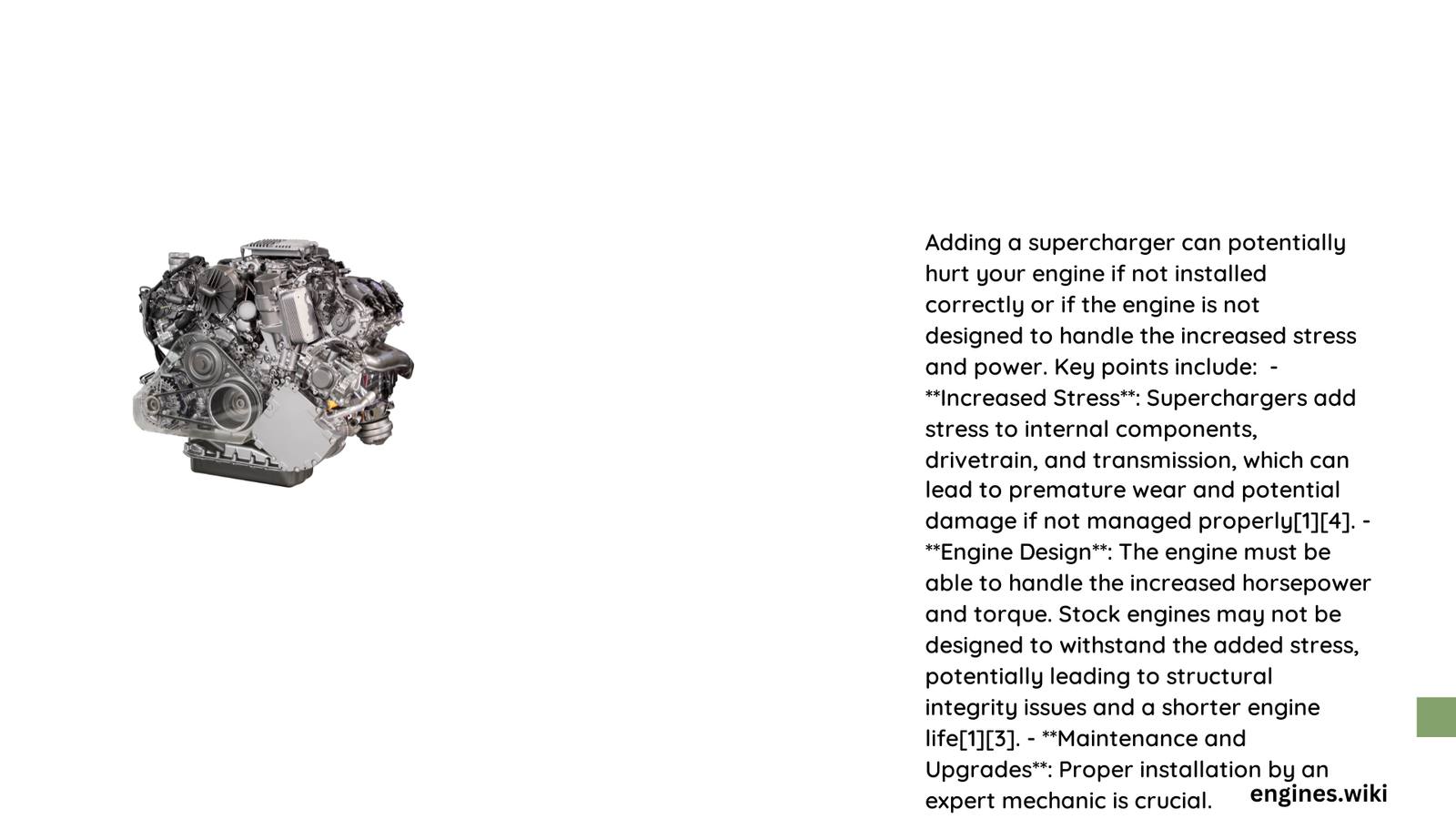Adding a supercharger can potentially damage your engine if not implemented correctly. While superchargers offer significant performance gains, they introduce substantial mechanical stress that can compromise engine components, fuel systems, and overall reliability. Proper engineering, component upgrades, and meticulous maintenance are crucial to mitigate risks and ensure long-term engine health.
What Components Face the Highest Risk from Supercharger Installation?
Supercharging introduces extreme mechanical stress that can compromise multiple engine systems. Understanding these risks is critical for preventing catastrophic failures.
Which Engine Parts Experience Maximum Stress?
| Component | Potential Risk | Failure Probability |
|---|---|---|
| Pistons | Structural Damage | High |
| Connecting Rods | Mechanical Fatigue | High |
| Camshaft | Premature Wear | Medium-High |
| Engine Block | Thermal Stress | Medium |
| Fuel Injectors | Performance Degradation | Medium |
Critical Mechanical Considerations
When adding a supercharger, several mechanical factors dramatically increase engine vulnerability:
- Pressure Amplification: Forced induction can increase cylinder pressures by 40-60% beyond stock configurations
- Thermal Load Increase: Engine temperatures may rise 15-25% with supercharger installation
- Mechanical Stress Multiplication: Component load can increase exponentially with boost pressure
How Does Supercharging Impact Engine Reliability?
Supercharging introduces complex reliability challenges that extend beyond simple power enhancement:
- Compression Ratio Modifications
- Stock engines typically require compression ratio adjustments
- Recommended reduction from 10:1 to 8.5:1 for forced induction
-
Prevents potential detonation and engine knock
-
Fuel System Requirements
- Mandatory high-octane fuel (91+ octane)
- Enhanced fuel delivery systems
- Upgraded injectors and fuel pumps
What Maintenance Strategies Minimize Supercharger Risks?
Proactive maintenance becomes paramount when introducing forced induction:
- Quarterly Comprehensive Inspections
- Supercharger bearing assessment
- Seal integrity checks
- Boost pressure verification
- Enhanced Cooling System
- Upgraded radiator
- High-performance coolant
- Improved heat dissipation mechanisms
Can Stock Engines Handle Supercharger Installations?
Definitive Answer: Most stock engines cannot safely accommodate superchargers without significant modifications.
Recommended Upgrade Path
- Professional engine assessment
- Internal component reinforcement
- Cooling system enhancement
- Precision engine tuning
- Continuous performance monitoring
What Are Typical Failure Indicators?
Warning Signs Include:
– Unusual engine knocking
– Inconsistent boost pressure
– Increased exhaust temperature
– Fuel trim irregularities
– Reduced overall engine performance
Expert Recommendations

While superchargers offer exciting performance potential, they demand:
– Comprehensive engineering approach
– Substantial financial investment
– Ongoing professional maintenance
– Realistic performance expectations
Conclusion
Adding a supercharger isn’t inherently destructive but requires meticulous planning, professional implementation, and continuous monitoring to prevent engine damage.
References:
- [Supercharger Failure Analysis – Automotive Engineering Journal]
- [High-Performance Engine Modifications – SAE International]
- [Forced Induction System Reliability Study]
